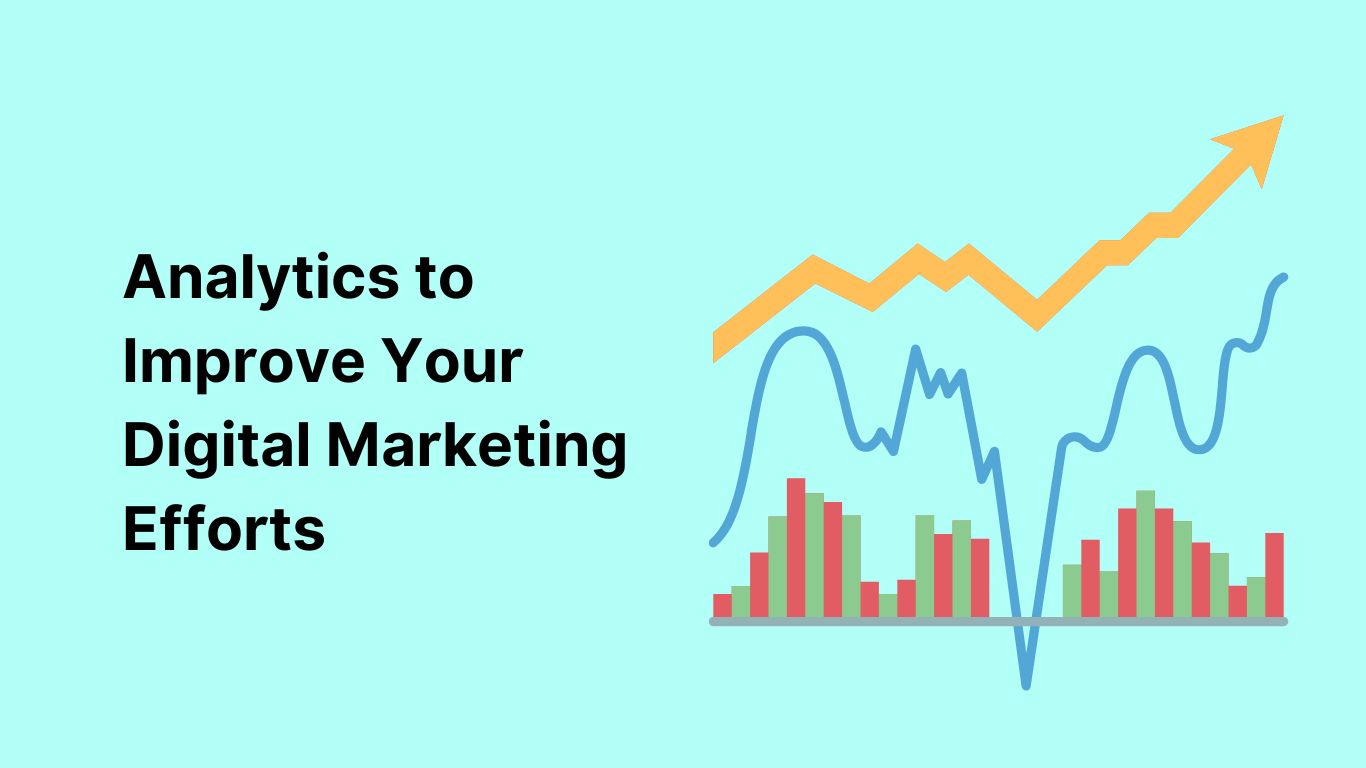How to Use Analytics to Improve Your Digital Marketing Efforts
Marketing strategies are
constantly evolving. With the vast amount of data generated every second,
businesses have a unique opportunity to harness this information to refine
their marketing efforts. Analytics plays a pivotal role in this process,
providing insights that can lead to more informed decisions and better results. Whether you're managing a large
corporation or a local business, understanding and utilizing analytics can
significantly boost your marketing efforts. For instance, if you're seeking
expert guidance, a Digital marketing agency in
Kanpur can provide tailored analytical insights to optimize your
campaigns. In this blog, we will explore how to use analytics to enhance your
digital marketing efforts effectively.
Understanding Digital Marketing
Analytics
Digital marketing analytics
involves the measurement, collection, analysis, and reporting of data related
to online marketing activities. It helps businesses understand the
effectiveness of their marketing campaigns, track consumer behavior, and
optimize their strategies to achieve better outcomes. The key components of
digital marketing analytics include:
Website Analytics: Google
Analytics provide insights of website and traffic, user action, and conversion
rates.
Social Media Analytics: Platforms
like Facebook, Twitter, and Instagram offer analytics tools to track
engagement, reach, and demographic data.
Email Marketing Analytics: Email
service providers like Mailchimp and Constant Contact offer data on open rates,
click-through rates, and conversion metrics.
SEO Analytics: Tools
like SEMrush and Ahrefs help track keyword rankings, backlinks, and organic
search performance.
Setting Clear Goals and KPIs
Before diving into analytics, it’s
crucial to define your digital marketing goals and Key Performance Indicators
(KPIs). Clear goals provide direction, while KPIs offer measurable benchmarks
to gauge success. Common digital marketing goals include increasing website
traffic, boosting social media engagement, generating leads, and improving
conversion rates.
KPIs should align with these
goals. For instance, if your goal is to increase website traffic, relevant KPIs
might include page views, unique visitors, and average session duration. If you
aim to boost social media engagement, track metrics like likes, shares,
comments, and follower growth.
Leveraging Google Analytics
Google Analytics is a powerful
tool for gaining insights into your website’s performance. Here’s how to use it
effectively:
Track User Actions: Google Analytics allows you to monitor how
users interact with your website. You can track which pages they visit, how
long they stay, and their navigation path. This data helps identify popular
content and areas where users drop off.
Measure Traffic Sources: It's
critical to know where your traffic is coming from. Traffic sources are
categorized by Google Analytics into groups such as social, direct, organic
search, and referral. You may use this information to determine which of your
channels is bringing in the most traffic to your website.
Set Up Goals: Goals in
Google Analytics help track specific actions you want users to take, such as
completing a purchase, signing up for a newsletter, or filling out a contact
form. Setting up goals allows you to measure conversion rates and identify
which marketing efforts are most effective.
Examine audience
Demographics: Google Analytics provides demographic data, including age, gender, and
location. This information helps tailor your marketing strategies to target the
right audience.
Harnessing Social Media Analytics
Social media platforms offer robust analytics tools that
provide valuable insights into your audience and the performance of your
content. Here’s how to make the most of social media analytics:
Monitor Engagement Metrics: Track likes, shares, comments, and retweets to gauge
how your audience interacts with your content.
Analyze Follower Demographics: Social media analytics tools provide
data on the age, gender, location, and interests of your followers. Use this
information to create targeted content that appeals to your audience’s
preferences.
Track Reach and Impressions: Understanding how many people see
your content (reach) and how often it is displayed (impressions) helps assess
the visibility of your posts. Aim to increase these metrics to expand your
brand’s reach.
Evaluate Content Performance: Identify which types of posts
perform best. Analyze the content format (e.g., images, videos, links) and
topics that generate the most engagement. Use this insight to create more
effective social media content.
Enhancing SEO with Analytics
Search engine optimization (SEO) is crucial for driving
organic traffic to your website. Analytics tools can help improve your SEO
efforts:
Monitor Keyword Rankings: SEMrush and Ahrefs allow you to track your keyword
rankings. Identify which keywords are driving the most traffic and optimize
your content to rank higher for those terms.
Analyze Backlink Profiles: Backlinks are a key factor in SEO. Use analytics to
monitor your backlink profile and identify high-quality links. Aim to acquire
more backlinks from reputable sites to boost your search engine rankings.
Assess Organic Traffic: Google Analytics provides data on organic traffic,
helping you understand how visitors find your site through search engines.
Analyze which pages and keywords drive the most organic traffic and optimize
accordingly.
Evaluate Content Performance: Identify which pages on your site
generate the most traffic and have the highest engagement. Use this insight to
create more high-performing content and improve your site’s overall SEO.
Utilizing Advanced Analytics Tools
Beyond the basics, advanced analytics tools offer deeper
insights and more sophisticated analysis:
Heatmaps: Tools like Hotjar and Crazy Egg provide heatmaps that show where users
click, scroll, and hover on your website. This data helps identify areas of
interest and potential issues with site navigation.
A/B Testing: Tools like Optimizely and VWO allow you to conduct A/B tests
to compare different versions of your website or marketing campaigns. Use A/B
testing to determine which variations perform better and optimize accordingly.
Customer Journey Mapping: Tools like HubSpot and Salesforce help map out the
customer journey, providing insights into how users interact with your brand
across different touchpoints. Use this data to create a seamless and cohesive
customer experience.
Conclusion
Incorporating analytics into your digital marketing strategy is essential for optimizing your efforts and achieving better results. By understanding and leveraging data from various sources, you can make informed decisions, refine your strategies, and ultimately drive more traffic, engagement, and conversions. Stay ahead of the competition by continuously analyzing and adapting your digital marketing tactics based on the valuable insights provided by analytics.


.jpg)




